On arrival at Maun Airport, you will be met by a representative who will introduce you to your pilot and show you to your light aircraft for your first flight. Your first destination is the camp located on the Boteti River which forms the boundary to the Makgadikgadi Pans National Park.
The lodge features twelve luxurious thatched and glass-fronted suites with en-suite bathrooms, each unit raised on a wooden platform. The main lounge and dining area, with its inviting wooden and thatch finish, allows you to relax at the bar while listening to the wide variety of night sounds so characteristic of the African bush. Alternatively you can lounge around the swimming pool or enjoy the panoramic river vista from the game-viewing hide built into the bank of the river.
The Boteti River is the main outflow of the Okavango Delta, collecting the water that flows past Maun and stretching about 250 kilometres southeast to Lake Xau on the extreme south-western edge of the great Makgadikgadi salt pans.
In the mid-1980s the flood waters of the Okavango Delta started to decline as the region entered a cycle of low rainfall, and consequently the Boteti River began to recede. The river stopped short of Leroo La Tau in 1988, and by the mid-1990s had dried up completely.
Leroo La Tau was left with a few waterholes in the riverbed which continued to offer refuge to a small pod of landlocked Hippo, together with Crocodiles which became completely terrestrial, making dens in riverbank ‘caves’ downriver from the lodge. Large numbers of Zebra and Wildebeest continued to graze the rich grass plains, migrating to the Boteti River at the end of winter to access the remaining waterholes.
In 2009, two decades after the Boteti River stopped flowing, record rainfall resulted in the highest Okavango flood levels for 25 years, and the river once again flows past Leroo La Tau.
Leroo La Tau is built on cliffs over 10 metres above this changing riparian environment, offering a vantage point that ensures unsurpassed views of the river and the Makgadikgadi Pans to the east.
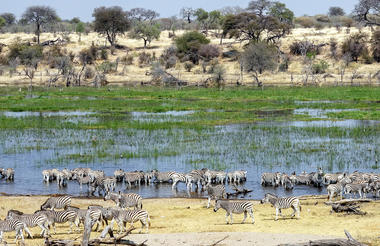
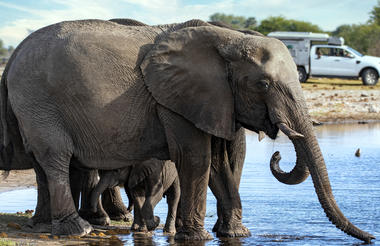
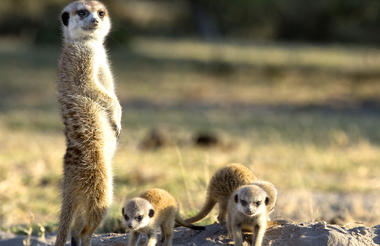
The lodge offers guided game drives in the Makgadikgadi Pans National Park focusing on the exceptional wildlife sightings along the Boteti River. Depending on the water level, boat activities are also provided. Optional cultural excursions can be arranged to Khumaga Village.
Leroo La Tau translates as ‘lion’s paw’ but, although the surrounding area features abundant Lion, Zebra and Wildebeest, it also boasts Chobe Bushbuck, Leopard, Cheetah, Brown and Spotted Hyena, Impala, Kudu, Jackal, Porcupine, Genet and Caracal, to name but a few.
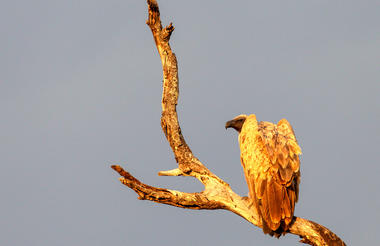

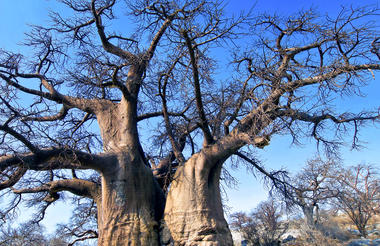
On your morning of departure after a game activity and late breakfast, you will be transferred to the airstrip to for a light aircraft transfer to Savute, another prime wildlife area in Botswana.
Stretching from the Linyanti River all the way to Savute Marsh, the winding waterways of the Savute Channel have pumped life into the western section of Chobe National Park for many thousands of generations. However, this fickle and unpredictable channel, which has a fascinating history of flooding and drying up, independently of good rainy seasons and flood levels elsewhere, has mystified local inhabitants, geologists and others for many years.
When David Livingstone, the first European to visit the area, saw the Savute Channel in 1851 it was flowing. Thirty years later it had disappeared and the Savute Marsh had dried out, remaining this way for almost 80 years. It flowed again from the late 1950s to the early 1980s, when it again receded, hence its reputation as ‘the river that flows in both directions’.
In 2009, after another extended hiatus, the channel began flowing again and by January 2010 had spilled into the Savute Marsh for the first time in three decades, but for how long – no one knows …
To ensure a private and relaxing environment, Savute Safari Lodge accommodates just twenty four guests in eleven thatched chalets built of local timber and one family room which consists of two double bedrooms. The chalets, which have been elegantly furnished in calm neutral tones to blend with the natural environment, feature expansive private decks, a combined bedroom and lounge area and en- suite facilities.
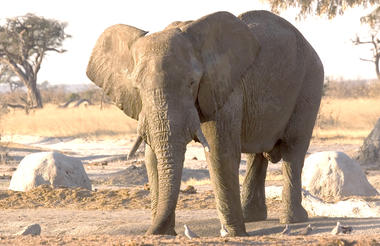
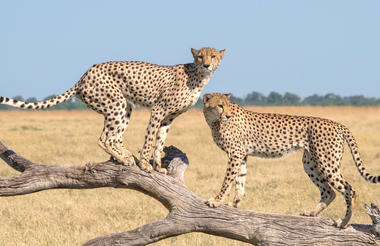
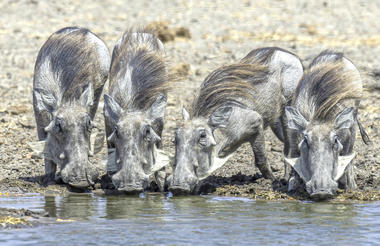
Activities are organised around game drives throughout the Savute area in open 4x4 safari vehicles. Many trips will incorporate a visit to the Savute Marsh to give you a chance to see the historic presence of the Savute Channel at the marsh against a backdrop of teeming wildlife. Guests can also enjoy a visit to the ancient San rock paintings at Gubatsa Hills – a small hilly outcrop which forms a prominent landmark in the otherwise flat landscape.
Savute boasts the second-largest summer Zebra migration in Africa; its timing is determined by the rains, but usually occurs between November and December and again between February and April, when the Zebras move from the rivers in the north in search of the rain-ripe grasslands and full waterholes in the southwest of the park. The migration is always followed by large numbers of predators – the Zebra migration is a must for visitors.



After your morning activity and breakfast you will be transferred to the air strip for your onward flight to the Okavango Delta. Check in at Camp Moremi. Recently completely rebuilt, Camp Moremi is located within Botswana’s world-renowned Moremi Game Reserve, situated on the edge of the Xakanaxa Lagoon in an area known for its spectacular game-viewing opportunities.
Camp Moremi boasts 12 expansive, modern styled thatched safari tents, including one family room, and accommodates a maximum of twenty-four guests. The family room which includes two separate bedrooms and bathrooms, connects through interleading doors. All standard tents are expansive with spacious bathrooms consisting of double vanities and showers, and private decks offering views over the Moremi Game Reserve. Subtle décor and lighting fixtures allow for a natural and warm atmosphere within each room to create a peaceful and harmonious blend with the surrounding environment.
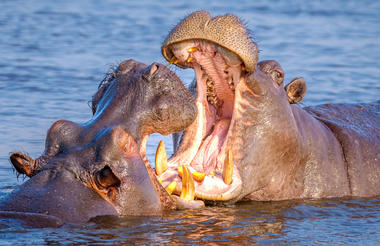
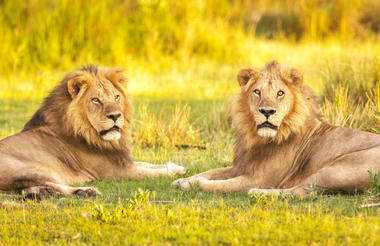
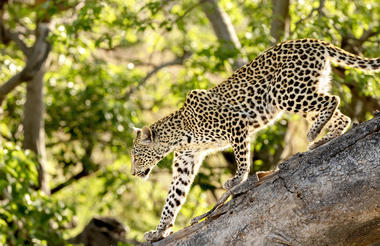
Guest activities include a choice of morning and afternoon game drives throughout the many different ecosystems that the Moremi Game Reserve has to offer or the possibility to explore the Xakanaxa Lagoon and its surrounding channels by boat. This blend of activities allow for access to incredible landscapes, impressive wildlife as well as the opportunity to enjoy the picturesque waters of the Okavango Delta.
The team of experienced Professional guides will introduce you to a whole new world of wildlife; watch a Leopard stretched out lazily in the branches of a Mopane tree, herds of Elephant grazing under a canopy of green or a pride of Lions camouflaged in the long grass. Moremi Game Reserve’s incredible wetlands support a vast number of antelope, including Impala, Kudu and Waterbuck. Birdlife is prolific and the majestic Fish Eagle and vivid Malachite Kingfisher are frequently seen and even the rare Pel’s Fishing Owl makes an occasional appearance, to the delight of guides and guests alike.



After a morning activity and a leisurely breakfast on your last day at Camp Moremi, you board a light aircraft for your transfer back to Maun.

